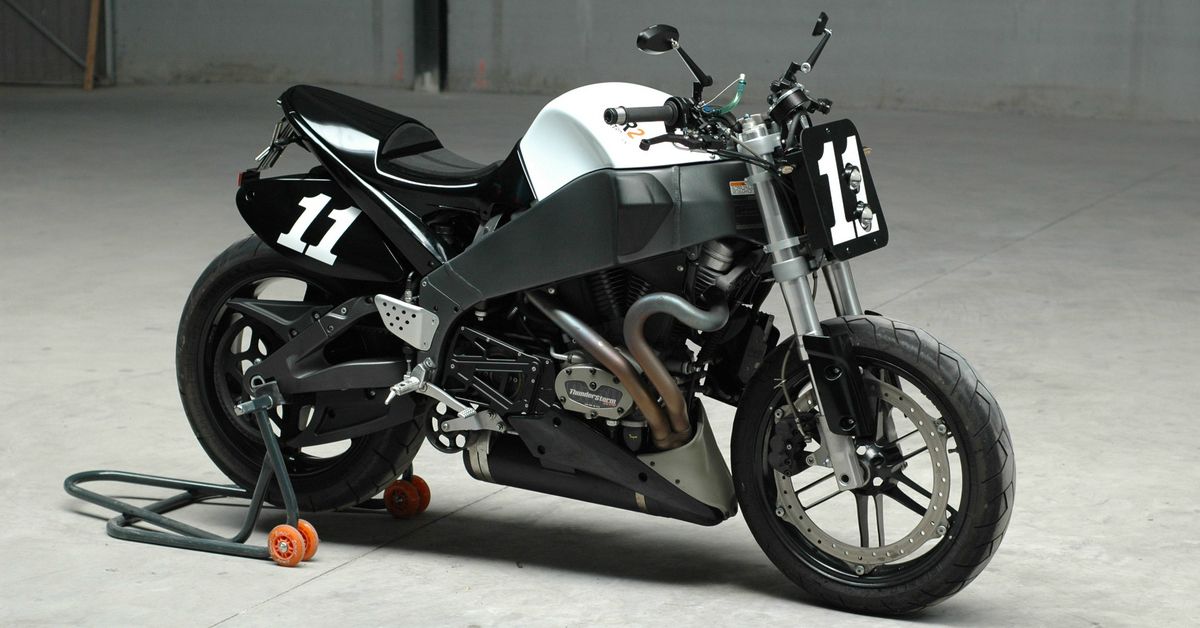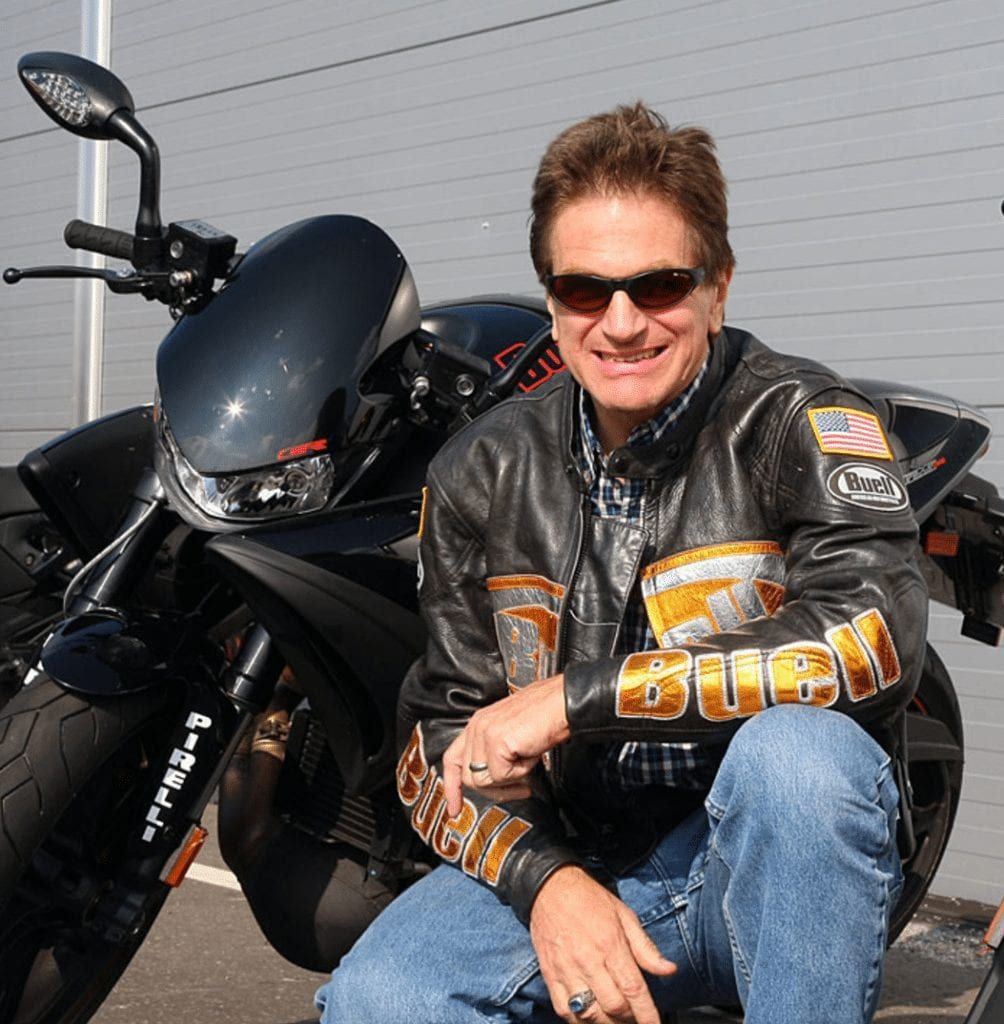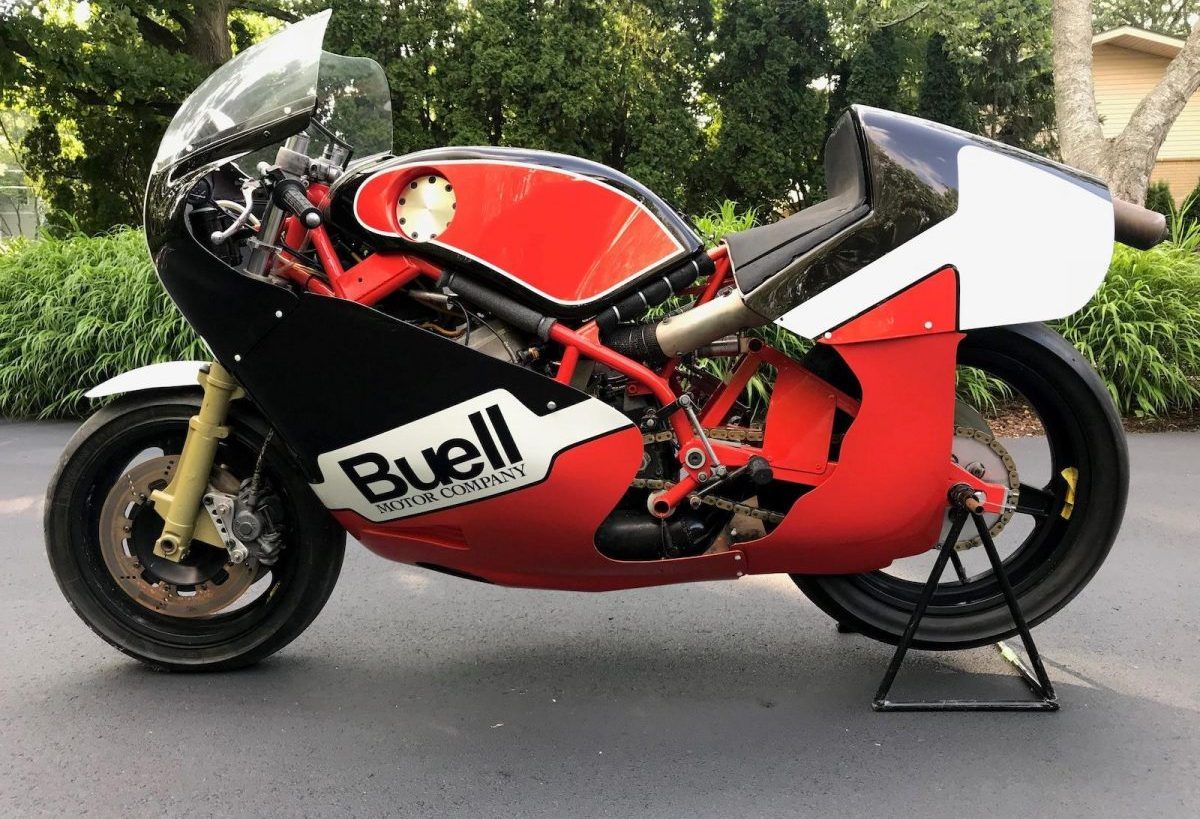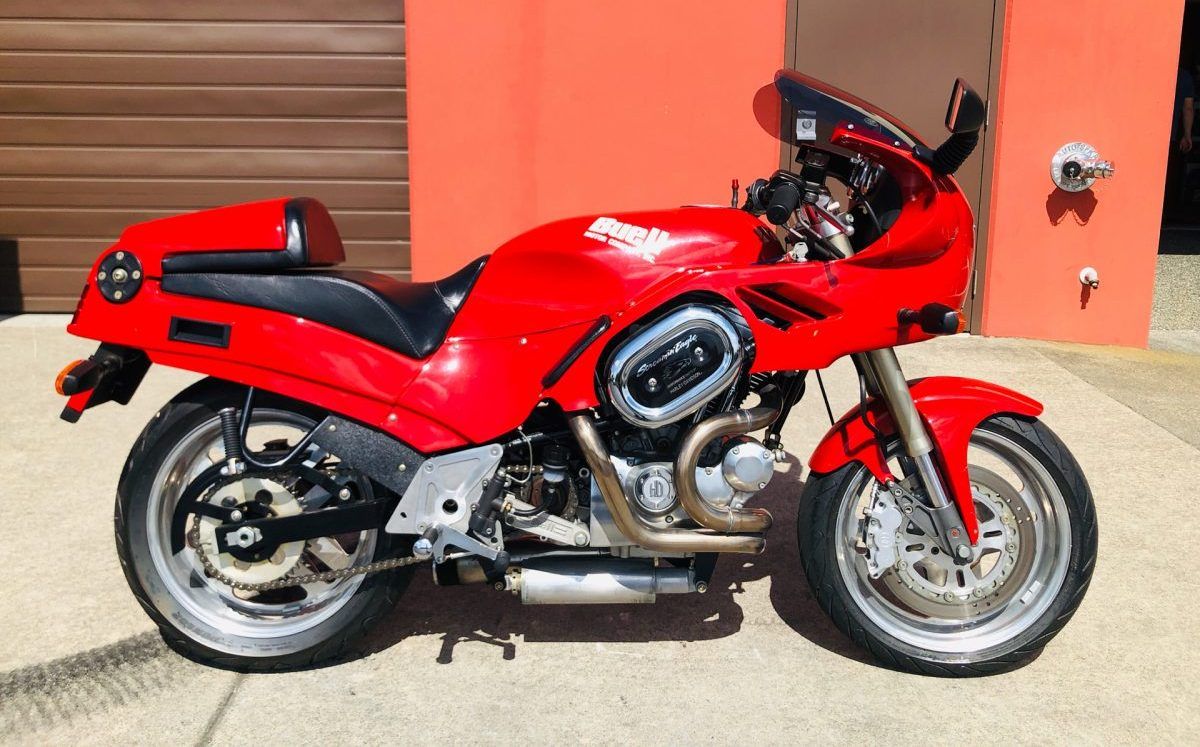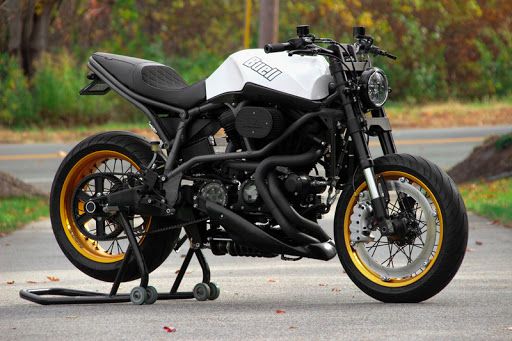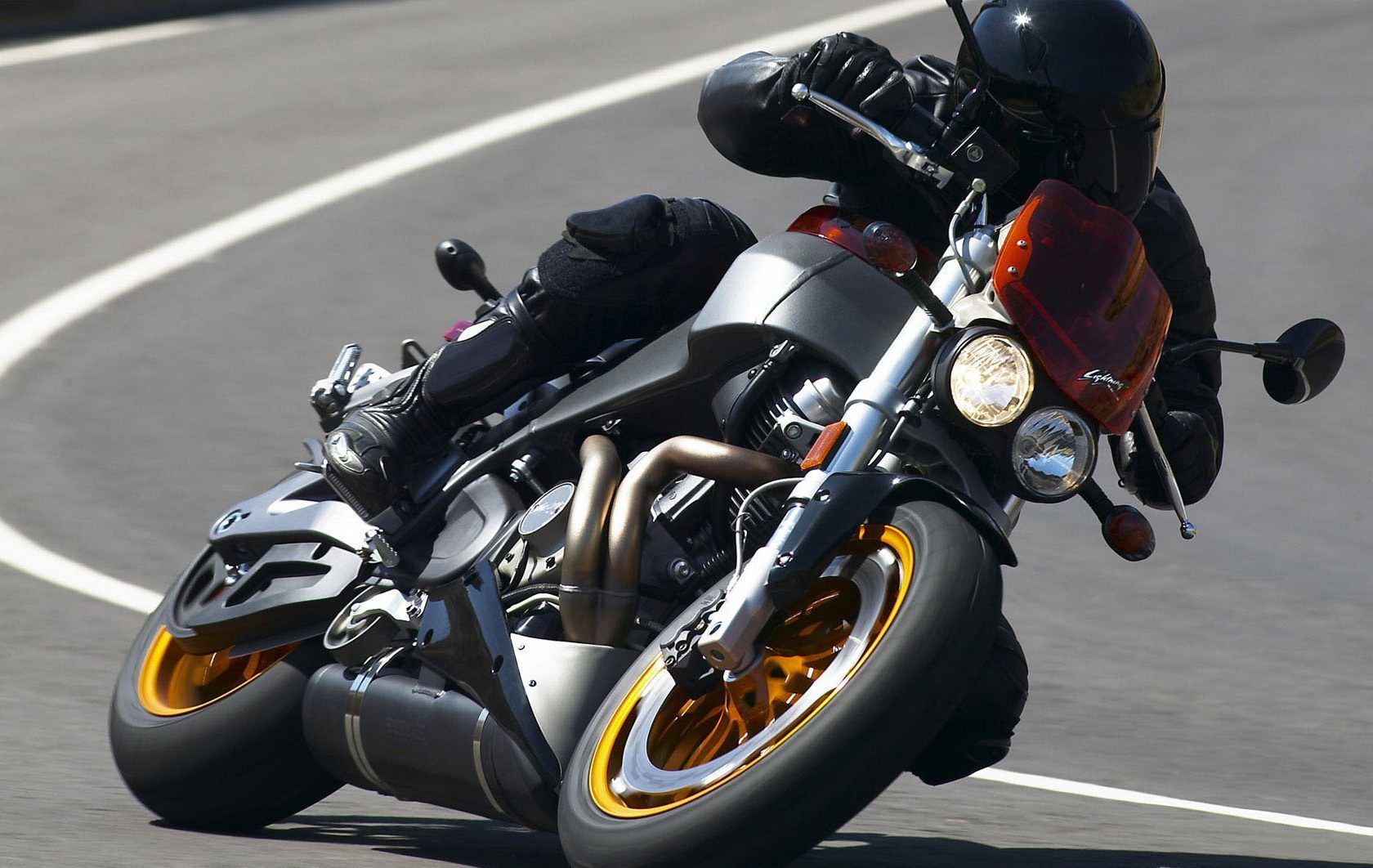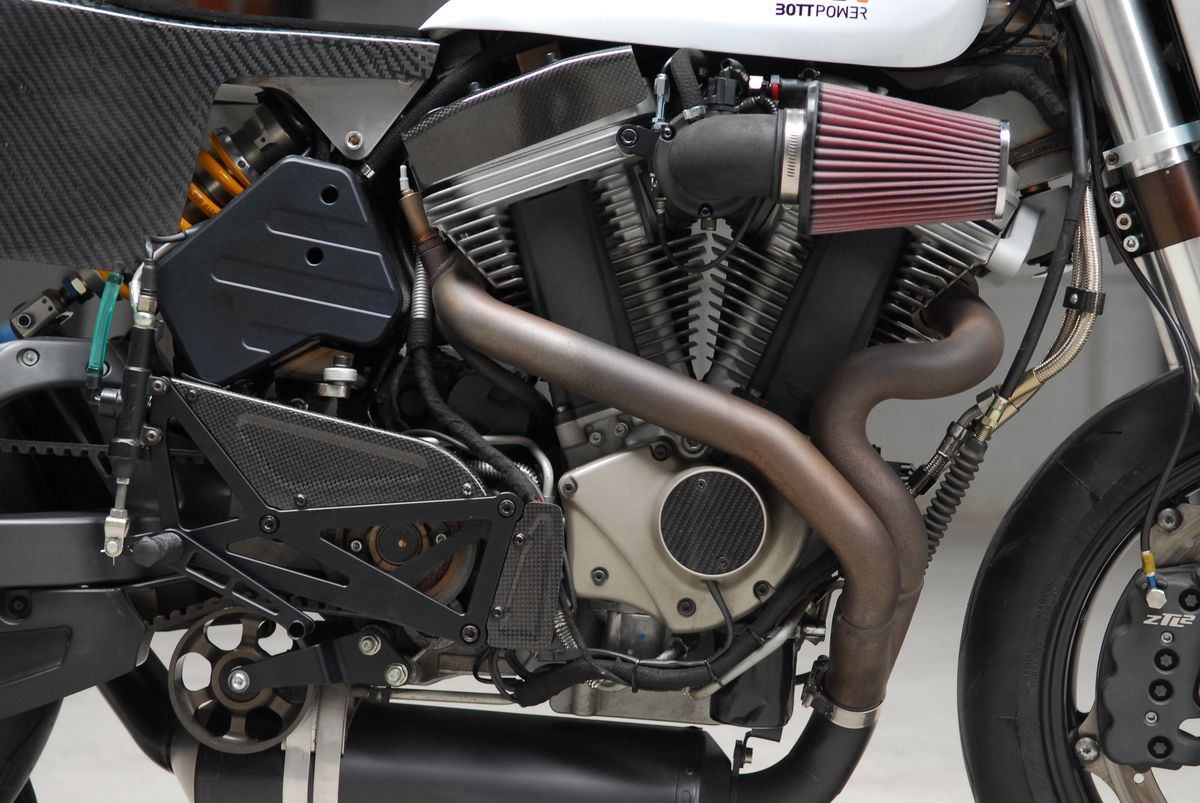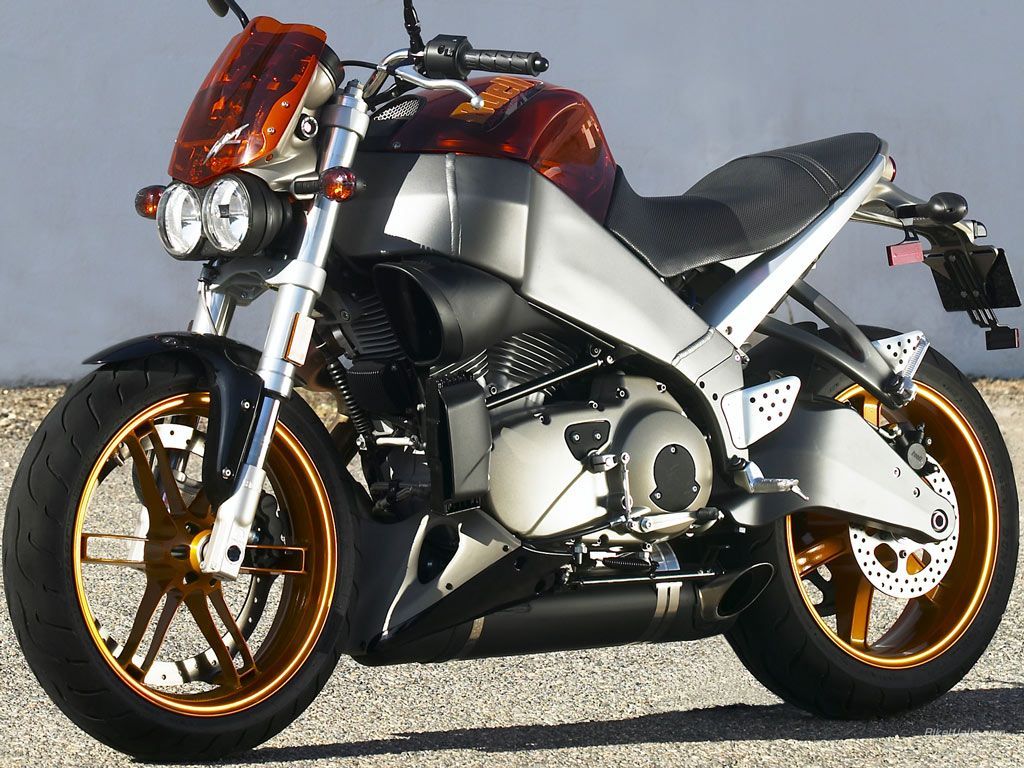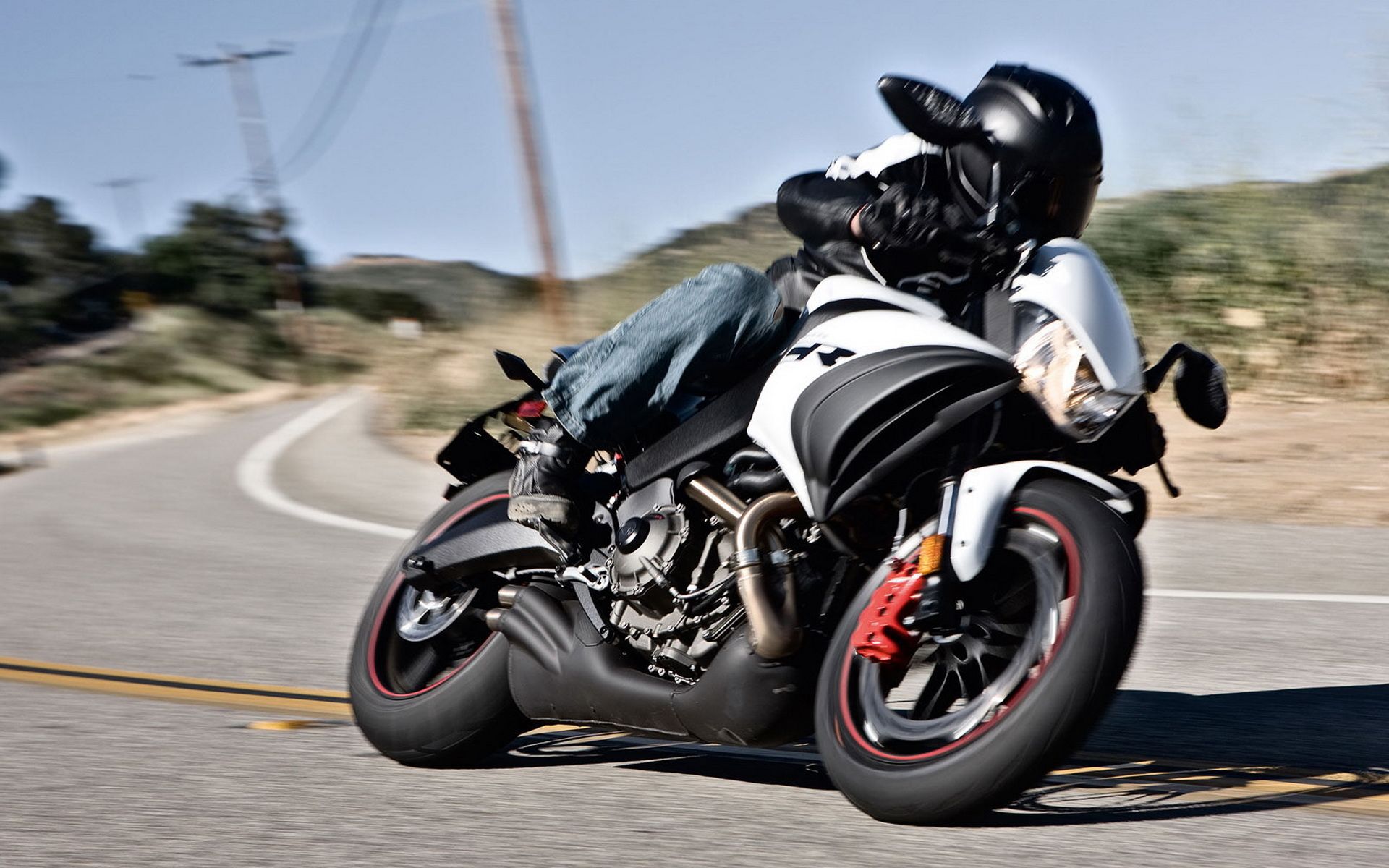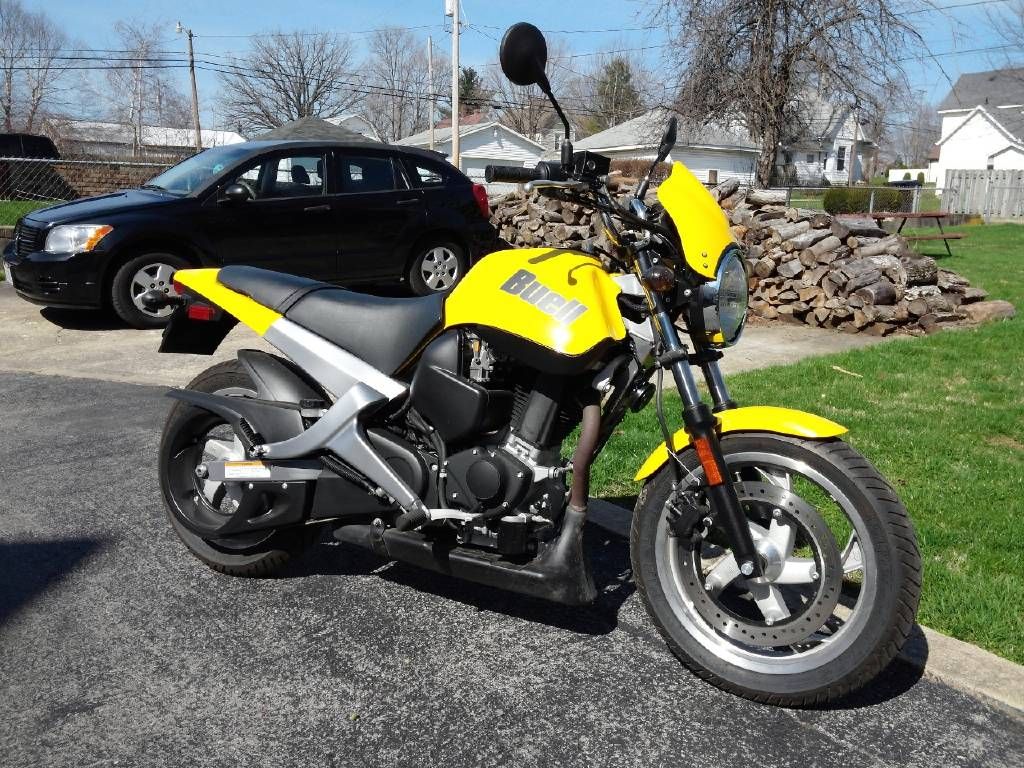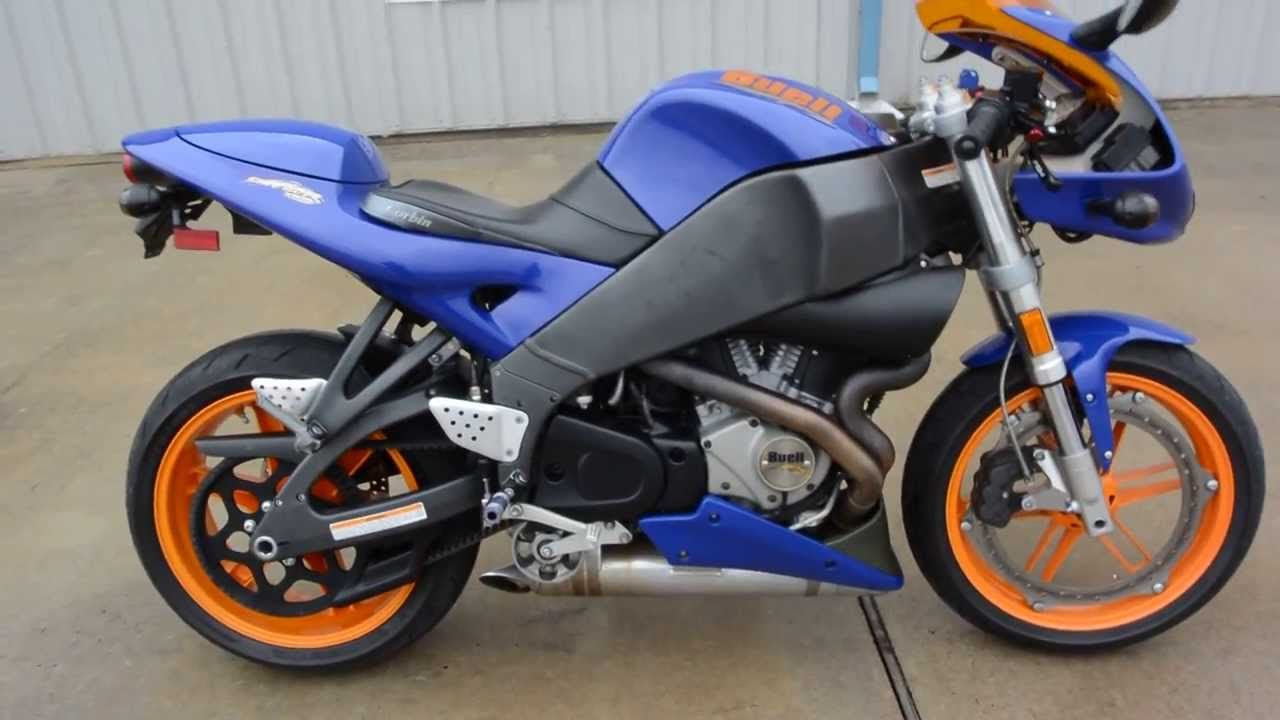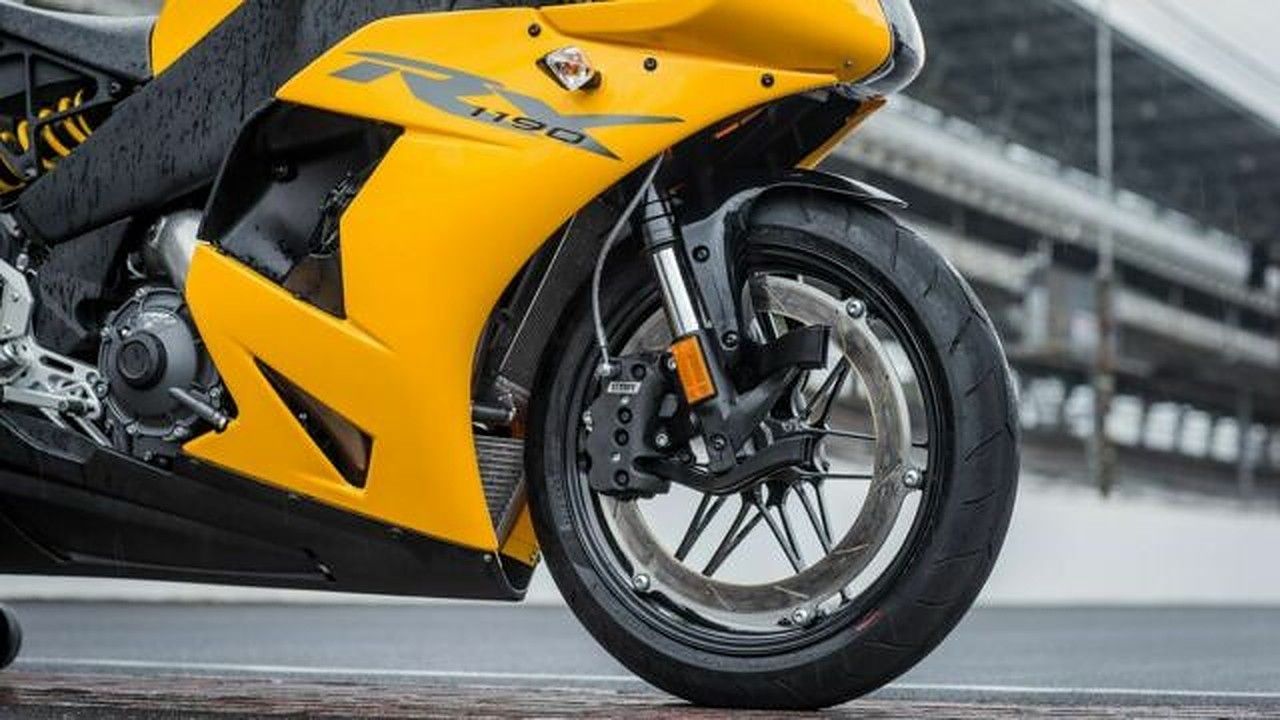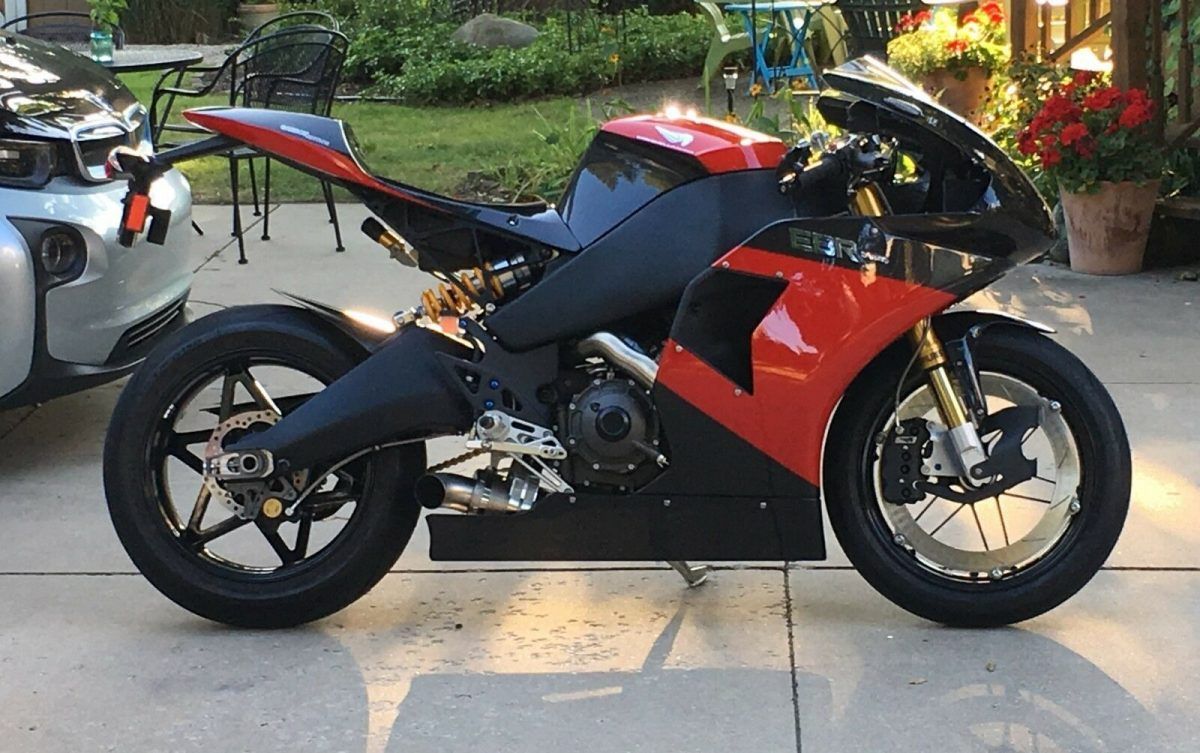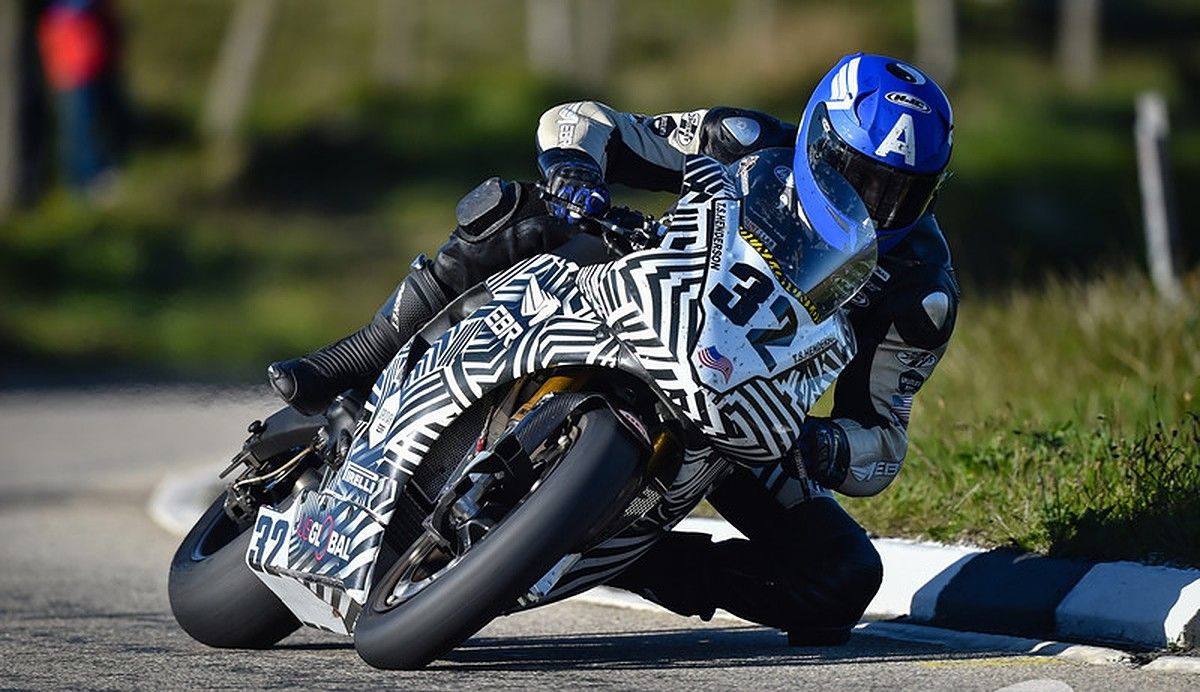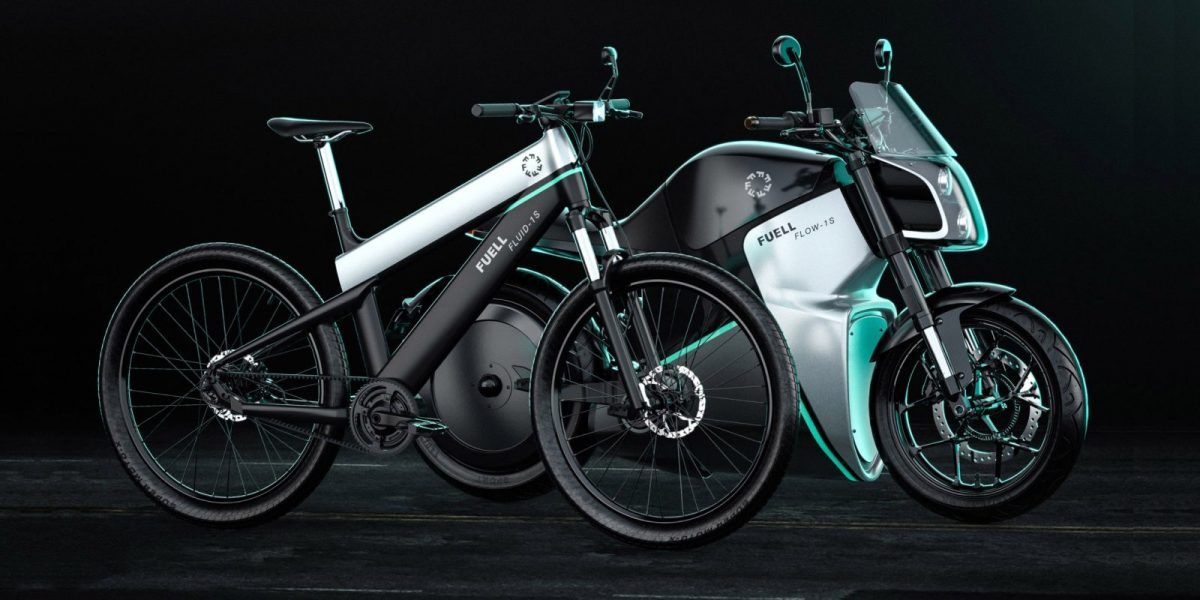Buell Motorcycles as a brand is one of the most misunderstood and maligned companies that ever existed within the United States. Similar in history to Preston Tucker, Erik Buell really did produce over 130,000 very well designed, and somewhat quirky, street and competition motorcycles.
There was no big mistake the company made that caused its downfall, the main thing that killed Buell Motorcycles is that a management change at its partner company Harley Davidson saw the Buell Motorcycle Company as an unneeded appendage.
BMC itself had been in a constant state of improvement since it was started in the very early 1980s. Actually Buell had been building and selling motorcycles that were very modern and could compete with anything when they were shut down.
15 Who Is Erik Buell?
Erik Buell firstly is a guy who loves competition motorcycling. After graduating from The University of Pittsburgh, Erik went on to work for Harley Davidson, helping to design their suspensions and chassis components. His work there was brief due to his love of competition motorcycling.
He bought parts and tooling from a defunct British brand called “Barton” for a 750CC road racing cycle. He ended up piecing two cycles together reengineering every component including the “Square 4” engine which he competed with briefly.
The bike, “RW750”, competed in a class normally for 500CC 4-cylinders then switching to a twin in AMA “Formula One.” After trying Yamaha parts on the second “RW750” he moved onto building other bikes due to AMA dropping Formula One.
14 Buell Motorcycles Opens
While selling competition parts and doing consulting for Schwinn and Yamaha, Buell started using his connections at H-D and bought surplus XR1000 engines which were being discontinued because they were based on the older Sportster series and the new version was coming out that year - in 1985.
His first competition cycles called the RR1000 were born. Using his unique engine mounting system and underframe rear shock/spring combination, these bikes were like nothing anybody had ever designed.
Being fully-faired cycles these bikes attained speeds well above 150 mph despite not having the high horsepower of their Japanese counterparts. Over 50 RR1000 models were built between 1987-88 until all of the surplus engines were used up.
13 First High Production Bikes Designed And Sold
Using production Sportster XL1200 engines, Buell designed and sold The Competition RR1200, of which 65 were built, and the much better looking Street and Competition RS1200 went into serious production of which there were several thousand built.
The engines were limited to 57 horsepower at the wheel but the RS1200 had very innovative designs on every component of the bike. They were rolling jewels and used polished aluminum from the wheels to the mounting brackets. The rear pillion even flipped up into a backrest for the passenger.
While The RR1000 and RR1200 looked like an overgrown BMW race bike the RS1200 was gorgeous and they caught on in the boutique motorcycle market despite a high price of around $16,000.
12 Buell Motorcycles Made Boring Components Fun
Before noise emissions laws changed the design, Buell took the boring air cleaner assembly that came with Sportster engines and flipped them 45 degrees and designed the curved steel frames to compliment them. Later, a Screaming Eagle Carbon Fiber air cleaner assembly could be ordered complimenting the bike.
Using top-shelf components was always done on the brand. "Glitzy" Performance Machine wheels and brake assemblies were sold on the earlier models. Harley guys had to mortgage their house to have them, but they came stock on the Buell.
Since twin-spar aluminum frames weren’t available, the steel frames were designed to have artistic curves that complimented the various aluminum mounting brackets on the bike.
11 Weight Savings And Mass Centralization Were Key Concepts To Design
Mass centralization was actually the company catchphrase for the concept. They were serious about it as well. Later Buell designs starting with the S-Series consisting of the S-1 Lightning and S-2 Thunderbolt omitted 1 front brake assembly while enlarging the front that they kept. This was done because testing found that there was no diminished braking, but suspension rebound was much quicker and controllable for the forks.
The engine vibrations were controlled by uniplanar mounting from the top allowing the engine to float in 1 axis but staying a stressed member in another axis. That unique engine mounting system allowed the bikes to take advantage of the heavy flywheels, and use them to help right the bike and resist flipping when turning hard while leaned over.
10 Harley Bought Minority Shares, Not Once But Twice
It’s no secret Harley Davidson bought a 49% share of the company in 1998 after Buell had sold over 20,000 cycles. In fact, Harley started carrying the marque in their franchise which was great, because prior to that, a buyer would have to buy one through a boutique vendor that usually carried exotic Italian brands such as Aprilia, Bimoto, and Ducati (before they were commonplace).
Most people do not know Harley bought a small minority share as early as 1993. Despite working against the odds, the company consistently made money and although lower in power than a Japanese sportbike, the buyer got a lot for their money and engine parts were available all over the world.
9 Buell Was A Key Developer In Improvement In The XL1200 Series Engine
Not satisfied with 57 rear wheel horsepower from the production Sportster engines, Buell spent considerable money building and testing the powerplant and got Harley-Davidson to carry those engines with a different state of tune.
Starting with the X-1 Lightning in 1999, certain models came with fuel injection, long-duration camshafts, much higher compression ratio, and higher flowing cylinder heads. Not all models came with the higher output engine, but the ones that did put out about 74 h.p. at the rear wheel.
Later when the XB Series came out, the reliability of the engine was much improved and Buell divided displacements into two categories 900 and 1200 CC. The peak power outputs were not very different, but the 1200 had a broader torque curve and was easier to drive fast.
8 Lost Over 40 Lbs. Of Weight By Using An Aluminum Frame
Not having the tooling and financial components to do modern twin-spar aluminum frames, the Buell models prior to the introduction of the XB series in 2002, used modern steel frames similar to Ducati, but they were heavier than Twin-Spare Aluminum.
While it’s true Buell had already started installing an aluminum subframe on the X-Series, the XB finally had a frame design used on Hondas since the late 1980s. They managed to remove over 40lbs while slightly increasing power.
The Frame Assembly was also the fuel tank, and the dry sump oil tank was eliminated and the engine oil was now stored in the swingarm.
7 The Buell 1125R And 1125CR Caught On Slowly Their First 2 Years
Despite having modern 146 H.P. liquid-cooled V-twin engines designed by Rotax, the models sold mediocrely their first 2 cycles. People weren’t used to seeing them because they weren’t as physically attractive as some of the earlier designs.
The bikes were about speed and handling and the looks suffered a little in the way that the early GSXR was kind of unattractive. Due to customer feedback, Buell came out with the Cafe Racer in 2009, a full two years after the R.
The streetfighter version that would have been produced as phase 3 was never produced because Harley Davidson wanted out of the deal and divested the brand shortly after the CR was produced. The CR does differ from the R as the swingarm and gear ratios are different.
6 Buell Built Two Oddball Bikes That Sold Reasonably Well
To have an entry-level bike to sell Buell came up with the “Blast” which essentially looked like a scooter with a single-cylinder Sportster engine displacing 498CC. These bikes practically drove themselves, and other than having a 5-speed transmission, they were as easy to drive as a scooter.
For years H-D offered their operator training and license certification programs using these bikes. Buell also built a series of bikes called the “Ulysses” XB12X which was an extended frame version of the XB12 remade to do adventure touring work and be comfortable off-road as well as on-road.
The bike was well-received and despite being an adaption of a road racing model was equally capable as anything Japan or Germany sold in the niche at the time.
5 If You think They Barely Sold Bikes, Think Again
When H-D’s new CEO was hired from an air conditioning manufacturer to make the changes he felt the company needed in 2009, Buell had steadily built up fantastic growth. His decision of getting rid of a brand that was exploding in growth will go down in history as one of the biggest blunders in corporate America.
According to the website for the current Erik Buell Racing, which is the reborn competition cycle company, Buell Motorcycles sold over 90,000 units of the XB series just for 2002. The introduction of the modern 1125 series started slow, but they picked up speed.
The company did shut down and not produce bikes at all for a couple of years as they were forced into bankruptcy by not being allowed to sell the minority shares to a competitor.
4 Buell Pioneered The Outboard Mounted Brake Rotor
Always trying to gain an edge in performance, Buell claimed they had tried multiple configurations with regards to front braking when designing the XB series. They had tried single and twin-rotor designs with different caliper set-ups and materials. What they found offered the best handling and braking was a brake rotor mounted to the outside of the wheel hub.
They found the brake stiffened the wheel allowing thinner spokes for reduced weight, while it also removed significant sprung weight that would have to be compensated for in the dampening of the suspension. They even tried different exotic brands of components in AMA Superbike but never found anything that worked better than what they sold on the street bike, save for race only carbon/carbon pads/rotors.
3 Erik Buell Racing Sells Motorcycles As A Specialty Company
Never one to take no for an answer, Erik Buell didn’t let a setback keep him down. By 2011 Erik Buell Racing was formed and sold race-ready premium price bikes at just under 50K, according to their own website.
These bikes were called the 1190RR series and were light weight, high powered versions of the previous Buell Motorcycle Company 1125, but with much higher power and lower weight due to using many specialty pieces from exotic materials.
Today, Buell sells the RX, SX, and the Black Lightning (street fighter) so they finally got the street fighter they wanted to produce as the third model before the Fun Police at H-D corporate decided to go and steal defeat from the jaws of victory.
2 Erik Buell And Associates Have Many Race Wins
In 2009, EBR won its first championship in AMA Superbike with Danny Eslick riding. In 2011 Hans Kitch won the European Superbike Open Race Class Title on a 1190RR. Geoff May won the October 2019 AHMA “Barber Cup” competing against multiple Ducati superbikes.
According to Topspeed.com: “As the 2007 motorcycle racing season came to a close, Buell riders and teams claimed five national championships, including the American Sportbike Racing Association (ASRA) Pro Thunderbike National Championship and the MOTO-ST Grand Sport Touring Manufacturer Championship.
Deeley H-D/Buell Canada rider Steve Crevier rode a Buell XBRR to victory in the season-finale American Sportbike Racing Association (ASRA) Pro Superbike race at the 24th Annual Race of Champions at Daytona International Speedway. Crevier took the pole in ASRA Superbike qualifying and led from the start in an 8-lap race run in wet conditions. Crevier’s victory was the first win for the Buell XBRR production-racer at a National-level event in the United States.”
1 Erik Buell Has An Electric Bike Startup Called Fuell
Visordown first reported Erik Buell’s possible entry to the electric bike arena back in April 2018, when the VanguardSpark concept was announced. And now in early 2020, it looks like the final version of the bike he developed with the help of Frederic Vasseur (ex-F1 and Formula E) and F-X Terny (owner of Vanguard Motorcycles) is ready to ride.
This could be affected by the current economic crisis, but Forbes reported the same information the “Fuell.us” website lists that it has both an 11H.P. model and a 47 H.P. model called the “Fllow”, it's going to sell along with an e-bike called the “Flluid”.
According to one vendor, who carried “Zero” brand motorcycles, some of the design engineers had worked for BMC before “Zero” was a thing, so this may be a serious entity.

